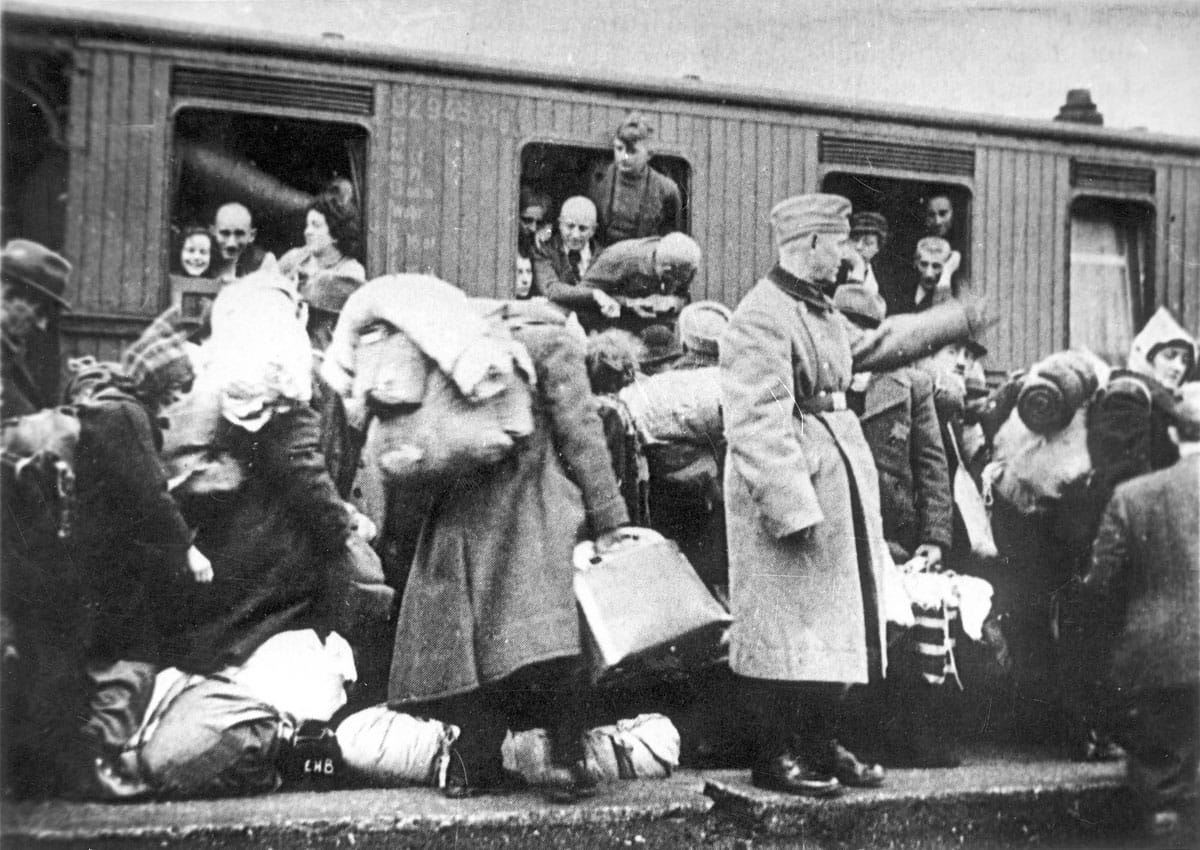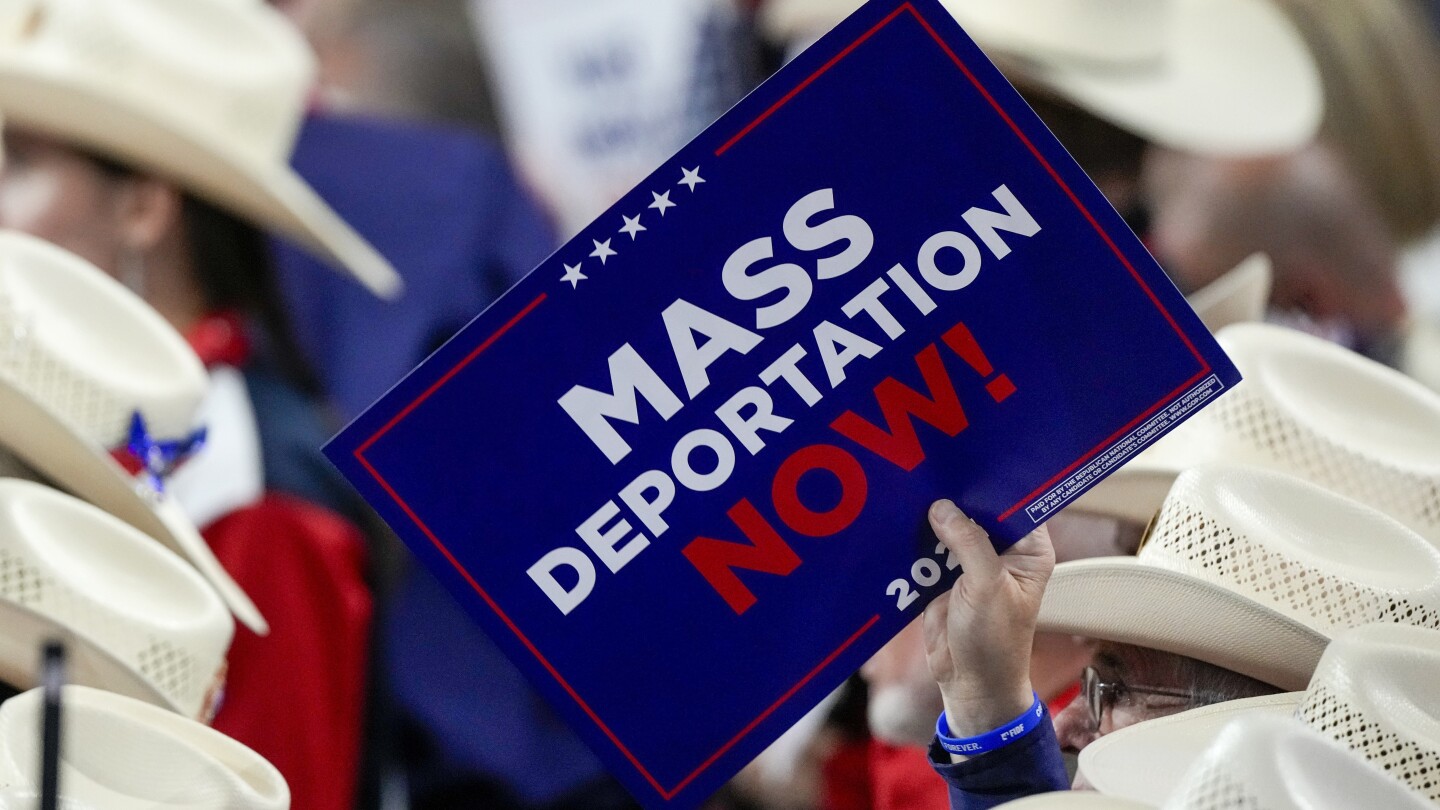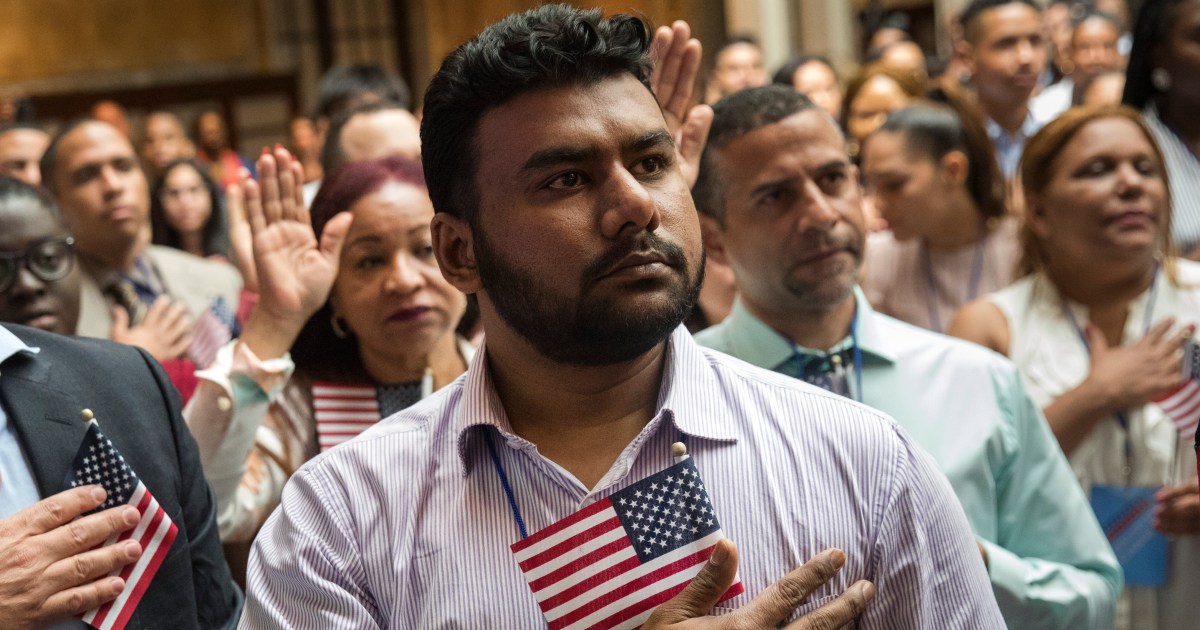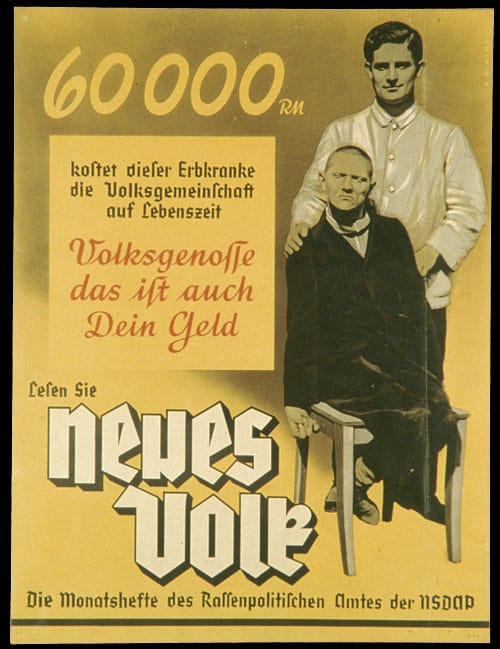This is what mass deportation looks like
Think long and hard about how what this could lead to.

Around the corner from my apartment in Berlin, there is a group of five brass plates inlaid in the cobblestones of the sidewalk in front of the house at Boxhagener Strasse 50. They are the Stolpersteine for the Kaufmann family: Ewald and his wife Helene (her birth name was Gerechtner); their sons, Theo, Kurt, and Julian; daughter-in-law Johanna (birth name - Eisenstädt) and granddaughter, Gittel.
Like most of these small memorials--the information is spare: Date and place of birth, if known; the date of their deportation and to where; and the date of death.
Most of the family were from Poznań in what is now Poland, except for Johanna and Gittel both born in Berlin. By their birth dates, you can discern their relationship. And the last two dates are all the same--deported 26 October 1942 to Riga; murdered there 29 October 1942. Gittel, born July 26, 1942, was three months old.
When I was growing up and learning about the Holocaust in school, one question I kept asking myself--that we all asked ourselves--how could the Germans have done this? What made them okay with rounding up people like cattle, literally loaded into cars meant for livestock, and shipped by the thousands to the concentration camps? How could they justify the mass murder of millions of people?
It wasn't until I moved here and learned more about the history--up close to where it happened--that I understood that it didn't start there. The deportations from Germany, the huge extermination camps--those were part of the Final Solution.
And the Final Solution was called that, by the Nazis themselves, because it was the culmination of a lot of different solutions, many steps along a descending path, that led to a genocide that the world still measures other atrocities by.
The more I learn about that time - the more I notice disturbing echoes in today's politics--both inside Germany--but even more--inside the United States.

Delegates to the Republican National Convention held in July 2024 wave signs saying "Mass Deportation Now!"
Who is 'illegal?'
I'm still having a hard time wrapping my head around a major U.S. political party making "mass deportation" part of its official policy platform, and that thousands of voters support it.
But, wait - I can hear you saying - this is not the same!
We just want to deport illegal immigrants - people who shouldn't be here - people without a visa or legal permission to be in our country. And no one is talking about sending them to concentration camps--let alone killing them!
It didn't start that way in Germany, either.
After Germany's defeat in World War I, the spread of rumors and conspiracy theories like the "stab-in-the-back myth"--the false belief that the German military would have won the war if it had not been for the activities of "disloyal" Germans--particularly Jews, communists, and socialists–led to broad public support for laws restricting the rights of Jewish people and other people the government deemed "subversive."
It also led to violent attacks on Jewish people. These first attacks were not conducted by government officials, but the government turned a blind eye in tacit approval.
Laws were passed that restricted what jobs Jewish people could have, limiting their ability to own property, and forcing many to sell their companies and property for far below market value, measures designed to compel Jewish Germans to leave the country.
Until October 1941, German policy officially encouraged Jewish emigration. Gradually, however, the Nazis sought to deprive Jews fleeing Germany of their property by levying an increasingly heavy emigration tax and by restricting the amount of money that could be transferred abroad from German banks.
- German Jewish Refugees 1933-1939, Holocaust Encyclopedia.
Many did emigrate to other countries--if they could.
Of the 523,000 Jews living in Germany in 1939, between 38,000 and 39,000 were able to emigrate to neighboring countries like the Netherlands, Denmark, Czechoslovakia and Switzerland.
But other countries often would not issue visas allowing Jews to immigrate. And, moving to another country requires money--and many did not have enough.
1939 also marked the first time the United States filled its combined German-Austrian quota (which now included annexed Czechoslovakia). However, this limit did not come close to meeting the demand; by the end of June 1939, 309,000 German, Austrian, and Czech Jews had applied for the 27,000 places available under the quota.
In multiple interviews, U.S. presidential candidate Donald Trump has said that, if he wins a second term in office in 2024, he would deport between 10 and 20 million illegal immigrants from the country. His estimates for the number of people have varied widely in different interviews.
And he has been vague on the specifics of what such an operation might entail - except to say that he would be willing to use the U.S. military for the purpose and that the process would necessitate the construction of migrant detention camps.
He has repeatedly referenced a program initiated by the Eisenhower administration that targeted Mexican agricultural workers in the United States. Under that program - the actual name of which contains a racial slur - just over one million Mexican laborers as well as U.S. citizens of Mexican ancestry were rounded up and deported to Mexico, without any due process hearing or even a specific order of removal.
The huge and fluctuating estimate numbers are cause for particular concern. The Eisenhower program was defunded due to public outcry at the number of deported U.S. citizens caught up in indiscriminate sweeps by U.S. Border Patrol.
That was one million people.
No one knows exactly how many undocumented immigrants are currently inside the U.S., but the nonprofit Pew Research Center estimates the current number at about 11 million people.*
But Republican vice presidential candidate JD Vance has indicated a second Trump administration would expand the pool of immigrants considered "illegal."

On the campaign trail, Republican vice presidential candidate JD Vance claims that Kamala Harris "waived a wand" and "illegally" allowed Haitian refugees to enter the United States. In fact, the Haitian immigrants in Springfield, OH are in the country through the Humanitarian Parole and Temporary Protected Status programs, which have been in place since 1990.
'I say who is a Jew'
In 1933, the Nazi regime began passing laws that revoked the citizenship of Jewish Germans. Legislation passed in July of that year, stripped recently naturalised Jewish citizens - mostly recent immigrants from eastern Europe - of their German citizenship.
In 1935, the Reich Citizenship Law went further - stating only citizens of "German or related blood" were citizens and that other people were to be classified as "state subjects" but without citizenship rights.
This was the law that ultimately stripped Otto Frank, Anne Frank's father, of his German citizenship, despite his having earned the Iron Cross for his military service during World War I and descended from people who had lived in Frankfurt since the 16th century.

In this 2019 article from Vox, Dara Lind covers the Trump administration's Denaturalization Task Force. Trump adviser Stephen Miller has promised that denaturalization efforts would be expanded in a second term.
Gradually, Jews in Germany were segregated from public life - they had to wear the Star of David on their clothing, Jewish children were not allowed to attend school with non-Jewish children, but sent to special schools. The law also forbid non-Jews from marrying or having children with Jewish people.
A complex hierarchy of racial purity categories, rooted in racist pseudoscience, governed which people under the Nazi regime were considered "Aryan" and desirable and which were considered "untermenschen" (lower people) who were considered subhuman. The lower categories included Jews, Slavic peoples, the Roma, Black people, and people who had any of a number of medical conditions.

Of course, what might be simple in theory is very complex in practice. Many people had mixed ancestry. Many people were married to or had children who would be considered undesirable under the laws. People were neighbors with, worked with, or served in the military with, people now decreed by the government to be subhuman.
Hence the need to divide in order to conquer.
Exceptions could be made. And, exceptions were made in both directions. People of Jewish ancestry who were related to or considered valuable to an Aryan person with power were protected - for a time.
Herman Goering, considered to have been the second most powerful person in Nazi Germany, is said to have angrily retorted: "I will decide who is a Jew!" when questioned about his continued employment of an assistant with Jewish ancestry.
And elite people of the right pedigree but without powerful connections could find themselves in the execution chamber as well. In some cases, being accused of showing insufficient enthusiasm for the Nazi government, its policies, or the war itself, were considered capital offenses.
The majority of execution victims in Brandenburg were German citizens. They had engaged in resistance against the Nazi regime, publicly expressed their doubts about the Wehrmacht’s ability to achieve victory, or evaded military service. Other execution victims came from Nazi-occupied countries such as Poland, Czechoslovakia, Belgium and France. About 150 of those sentenced to death were murdered because they rejected the Nazi regime on religious grounds.

In an essay published in March of 2021, political strategist Glenn Ellmers writes: "I’m really referring to the many native-born people—some of whose families have been here since the Mayflower—who may technically be citizens of the United States but are no longer (if they ever were) Americans. They do not believe in, live by, or even like the principles, traditions, and ideals that until recently defined America as a nation and as a people. It is not obvious what we should call these citizen-aliens, these non-American Americans; but they are something else."
Right-wing political writers in the United States have been signaling for years that they envision a future in which loyalty to the Republican Party and its leader are to be considered pre-requisites for being considered a "real American."
Now community and religious leaders across the country are following that lead.

“When people ask me … What’s gonna happen if the Flip – Flopping, Laughing Hyena Wins??” Zuchowski wrote, referring to Harris. “I say … write down all the addresses of the people who had her signs in their yards!”
Deported to ghettos first
While the Jews in Germany were being systematically segregated and persecuted, the Jews in the areas of eastern Europe that Germany conquered were being confined to ghettos in the cities--and murdered by mobile killing units in the countryside.
This was done in preparation for resettling German-speaking people (the Volksdeutsche) who were living in other countries in central Europe to relocate to the new German homeland.
As the German army advanced, they were followed by special police units known as Einsatzgruppen. In occupied Poland and the Soviet Union, these groups executed entire communities of people--either by shooting them or gassing them in mobile vans designed for the purpose and then burying the victims in mass graves.
Then, their homes and property were given to relocated Germans or to people in the occupied areas who helped the Nazis.
Although many people think of the extermination camps and gas chambers when they think about the murders of the Holocaust - about a quarter of all of European Jews killed by the Nazis were murdered in these isolated killings near their homes.
Then in the fall of 1941, Hitler decided that the Jews still living in Germany also needed to be deported.
In the autumn of 1941, approximately 338,000 Jews remained in Greater Germany. Until this point, Hitler had been reluctant to deport Jews in the German Reich until the war was over because of a fear of resistance and retaliation from the German population. But, in the autumn of 1941, key Nazi figures contributed to mounting pressure on Hitler to deport the German Jews. This pressure culminated in Hitler ordering the deportation of all Jews still in the Greater German Reich and Protectorate between 15-17 September 1941.
But there was a problem - the ghettos were already overcrowded with people.
Originally, the first transports of Reich Jews were supposed to be sent to Minsk, but it was so crowded that the trains were re-routed to Riga, Latvia, which was also overcrowded.
In preparation, officials there cleared the ghetto.
Over a period of two days, they massacred 27,500 people in the nearby Rumbula forest.
The number is so staggering that it can be easy to disbelieve. How is it possible to murder the equivalent of a town's population in 48 hours?
The reports of witnesses and perpetrators--documented after the war--tell the story.
The other prisoners were informed through posters that on the early morning of 30 November, they had to be ready to be sent to another place of detention – so they had to pack up their belongings and wait in the streets of the ghetto.
On November 30, through specially designed breaks in the ghetto fence near the Old Jewish Cemetery, columns of prisoners began to be taken out of the ghetto. Their path led to the Rumbula forest, about 9 kilometers from the ghetto, where pits dug by Soviet prisoners of war were ready.
As Rumbula was approached along the highway, the large columns of about 1,000 people were divided into smaller groups that were brought into the forest. There, under the beating of the convoy, people had to leave their belongings, then undress, take off their shoes, and then they were driven to the side of the pit.
The victims had to descend to a pit on a special slope, lie face down on the ground, and were shot in the back of the head. Each group that was shot was thrown onto the bodies of the previous group. Jekeln ironically called this method “sardine packing”. Since the shooting teams worked in shifts, the killings took place all day until dark. Following a similar pattern, the second major assassination operation took place on December 8.
Riga was not an isolated case. Similar actions would occur throughout the occupied eastern territory--again and again--in forests and in the ghettos.
Between the fall of 1941 and the winter of 1942, thousands of German Jews were deported to the ghetto at Riga, with some, like the Kaufmann family above, murdered shortly after arrival.
Some lived in the ghetto and worked as forced laborers until the entire ghetto was closed and the remaining occupants transferred to Auschwitz in 1943.
Similar transports were made all over occupied Europe.
By January 1942, about 10,000 Jews had been deported from Berlin to ghettos in eastern Europe, mainly Lodz, Riga, Minsk, and Kovno. Elderly Jews from Berlin were deported to Theresienstadt in 1942 and 1943.
Steps toward the unthinkable
From the beginning of the Nazi regime's racist pogrom against the Jewish people of Europe to the regime's defeat at the end of the war, their "solutions" evolved.
It started with a decade of discriminatory laws and free-floating periodic stochastic terrorism. It progressed to deportation to concentration camps and ghettoes where people were worked to death, starved to death, or died of epidemics of communicable diseases - cholera, typhus, for example. There they were also subject to summary execution for any small infraction or even just the need to free up space.
How to remove a "problem" of tens of thousands, then hundreds of thousands, then millions of "illegal" people? When these different methods still proved too difficult to the task, the 'doers' of the Nazi regime decided to build the killing centers.
It is key to separate concentration camps from extermination camps.
The aim of the Nazi concentration camps was to contain prisoners in one place.
The administration of the camps had a distinct disregard for inmates’ lives and health, and as a result, tens of thousands of people perished within the camps.
The aim of the Nazi extermination camps was to murder and annihilate all races deemed ‘ degenerate ’: primarily Jews but also Roma .
Although some concentration camps were constructed on German soil, none of the extermination camps were. They were built in occupied Poland. There were six of them: Chełmno, Bełżec, Sobibór, Treblinka, Majdanek, Auschwitz-Birkenau.
More than three million people were killed at these camps. The final solution.
I no longer wonder how it happened.
I think that many German people at the time were conditioned by a long cultural acceptance of anti-Semitism, then inundated with a sustained propaganda effort that demonized Jews and blamed them for a laundry list of societal ills.
Worn out by real economic hardship and an autocratic government that fomented fear and distrust among the population, I think it was easier to just go along. Believe the lies. Tell yourself it's justified. That you are the real victims– the ones really in danger.
The Nazis proposed simple solutions to complex problems — Do this, be this, and everything will be OK. (Also, if you don't go along, we'll kill you, too.) All the while, they gradually pushed the boundaries of what actions were deemed acceptable, tolerable.
And they made it easy enough to turn away.
I am not writing this to equate the current political climate in the United States with Nazi Germany. The Holocaust and the circumstances that led to it were a unique horror that should never be minimized or trivialized. And I think that's what we do when we attempt to draw direct analogies.
But I do want to show how small actions can proceed to larger ones that can quickly spiral out of control when a population decides to cede its trust in laws and rules and government to the whims of a strongman, an authoritarian--and then not look too closely at the details.
In the early days of the first Trump administration, I remember being horrified when White House Press Secretary Sean Spicer justified detaining a traveling five-year-old legal resident, without his parents, because he was Iranian.
It later became that administration's policy to separate children from their parents at the Mexican border.
The adults were prosecuted and held in federal jails or deported, and the children were placed under the supervision of the US Department of Health and Human Services. More than 5,500 children, including infants, were removed and up to 2,000 still have not been reunited as of March 2024.
If we return former president Trump to the White House, what actions will be unknowingly (maybe knowingly) condone this time?
Will children in other countries ask themselves, how we could do it?









